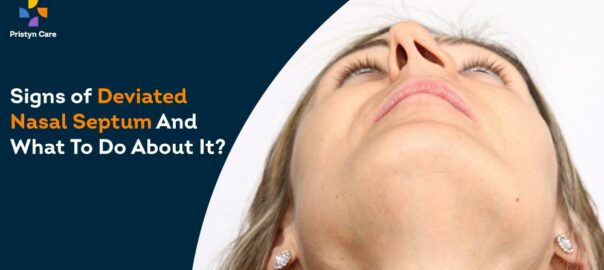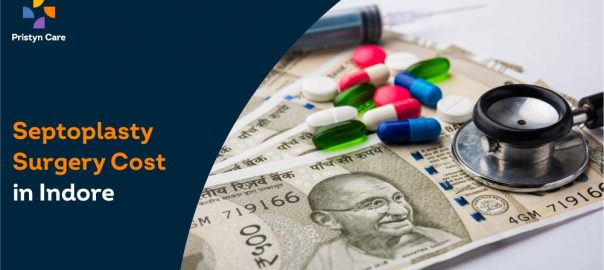![]() Views: 3,725
Views: 3,725
Difference Between Septoplasty and Turbinoplasty
This can later prove to be fatal as the person won’t be able to breathe properly.
Dedicated Support at Every Step!
Our Doctors are available 24 hours a day, 7 days a week to help you!
Generally, there are two surgeries a patient has to undergo to treat these two conditions- Septoplasty and Turbinoplasty. Both these are types of nose surgeries that aim to improve the airflow through the nasal passages. As these are nose surgeries, an ENT specialist is highly trained to perform both of them. Then how are they different, you may ask?
In this blog, we discuss both these surgeries so that you are able to differentiate between the two of them. We cover what are these surgeries, who needs them and how are they performed?
Table of Contents
What is Septoplasty?
Septoplasty is the surgery to straighten a deviated or crooked nasal septum. A nasal septum is made up of cartilage or bone which is about 2.5-3 inches long in adults and located inside the nose that separates it into two nostrils.
Also Read: Endoscopic Septoplasty: Cost, Procedure and Need
When the septum is crooked or bent instead of straight, it is known as a deviated septum. The deviated septum can occur due to an injury or it can also occur naturally.
No Cost EMI, Hassle-free Insurance Approval
Who Needs Septoplasty?
After a proper physical examination, the ENT Specialist reaches a decision of whether a septoplasty is required or not. Generally, a good candidate for septoplasty is someone who-
- Is a nonsmoker
- Suffers from a deviated septum due to which the person is unable to breathe
- Suffering from sinusitis that makes the stuffy nose
- Is not suffering from any health condition
What is the procedure of Septoplasty?
The procedure of the Septoplasty is the following-
Step 1- Anesthesia
The doctor administers anesthesia before starting the procedure. The anesthesia is administered either by intravenous channel or an injection. Within a couple of minutes, the patient becomes sedated.
Step 2- Making incisions
This is an integral part of a septoplasty. Sometimes a septoplasty is performed along with a rhinoplasty. Depending on the nose structure, the doctor has to make incisions so that the deviation can be corrected. The doctor makes several incisions on the columella which is the tissue that separates the two nostrils.
Step 3- Separating mucosal lining
The mucosal lining is the membrane that is over the septum which keeps the nasal linings moist. After the incision is made, the doctor lifts up this mucosal lining from both the sides of the nose.
Step 4- Septum correction
Followed by this, the doctor straightens the septum and corrects the deviation. Also, they put back the nasal lining in its original place.
Step 5- Closing incisions
Once the lining is in place, the doctor finishes the surgery by stitching the lining and placing a nasal packing inside the nose.
What is Turbinoplasty?
It is defined as the surgery to reduce the size of enlarged turbinates present on both sides of the nose. The primary objective of turbinoplasty is the repositioning or reshaping of the turbinates so that people can breathe more freely. With the help of special equipment, known as microdebrider, the ENT specialist shaves away some of the extra bone and tissue growth on the turbinates. There are other options of turbinate reduction available at present- radiofrequency or laser which is passed through the nose.
Who needs Turbinoplasty?
People who have unequal nasal airways, their turbinates tend to swell. Turbinates are structures found on the inner side of the nose. These are located on both sides of the nose. When these turbinates swell, these can cause symptoms such as nasal congestion, postnasal drip, headaches and even trigger sinusitis. Hence, people who undergo turbinoplasty can get relief from these symptoms permanently.
What is the procedure of Turbinoplasty?
The procedure of the Turbinoplasty is the following-
Step 1- Anesthesia
The doctor administers anesthesia before starting the procedure. The anesthesia is administered either by intravenous channel or an injection. Within a couple of minutes, the patient becomes sedated.
Step 2- Making incisions
Sometimes a turbinoplasty is performed along with a septoplasty. Depending on the circumstances, the doctor makes several incisions on the tissue that separates the two nostrils.
Step 3- Separating mucosal lining
The mucosal lining is the membrane that is over the septum which keeps the nasal linings moist. After the incision is made, the doctor lifts up this mucosal lining from both the sides of the nose.
Step 4- Septum correction
Followed by this, the doctor reduces the size of the enlarged turbinates using an instrument known as microdebrider. Once the size is reduced, they put back the nasal lining in its original place.
Step 5- Closing incisions
Once the lining is in place, the doctor finishes the surgery by stitching the lining and placing a nasal packing inside the nose.
What are the side effects of Septoplasty and Turbinoplasty?
As the septoplasty and turbinoplasty are both types of nose surgeries, these tend to incur the same risks and complications. Some of them are-
- Due to failure to straighten the septum or deviation of the septum, there can be possible chances of nasal obstruction.
- Inability to cure coexisting sinus issues, including headache, or polyps which requires additional surgery.
- Possible risk of bleeding.
- Failure to improve respiratory illnesses.
- Leakage of brain fluid or infection.
- Prolonged pain after the surgery.
- Perforation of the nasal septum.
How to recover after Septoplasty and Turbinoplasty?
Once you reach home after discharge, you should follow the below-mentioned measures to soothe out the pain and discomfort.
- On the first day, rest properly throughout the day.
- Do not rub or touch the nose even by mistake.
- Even if you feel like doing it, do not blow your nose.
- Sneeze only through the mouth instead of the nose.
- Apply an ice pack or few ice cubes wrapped in clean cloth or towel.
- Put two pillows under the ear when you sleep at night.
- Avoid activities that involve bending over or playing any sports.
- Do not go to dusty or smoky places.
- Avoid taking a shower within 24 hours of the surgery.
- Stay indoors. If possible, do not go to any crowded places.
- Avoid putting any pressure on the face while performing straining activities.
Conclusion
Both these types of nose surgeries- septoplasty and turbinoplasty-helps patients get relief from nasal congestion. In some severe cases, the patient has to undergo septoplasty along with a turbinectomy where the doctors remove the turbinates completely. At Pristyn Care, ENT specialists are highly experienced to cure sinusitis, enlarged turbinates or deviated septum with the most advanced treatment options. Consult with the experts to know more by booking an online consultation today!
Read more:
- Difference between Septoplasty and Rhinoplasty
- Difference between Submucosal Resection and Septoplasty










